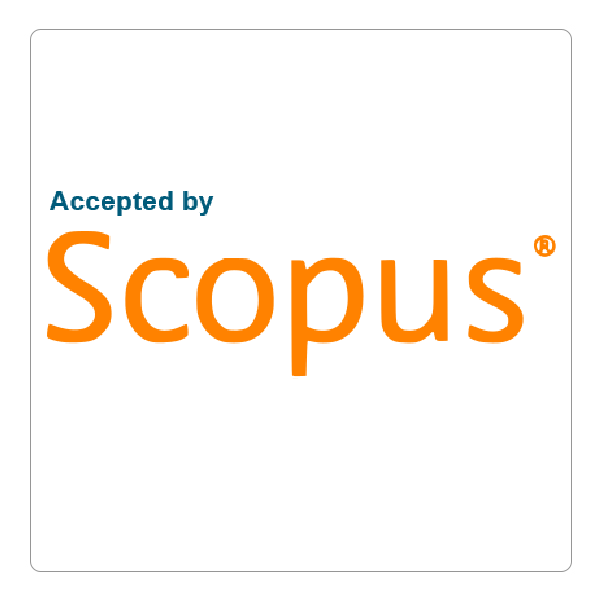How to Cite This Article
Abdullah, Sheylan S.
(2024)
"The Role of Mobile Phones in the Transmission of Bacteria and Fungi Associated with Hospital-acquired infections in Erbil City,"
Polytechnic Journal: Vol. 13:
Iss.
1, Article 21.
DOI: https://doi.org/10.59341/2707-7799.1834
Document Type
Original Article
Abstract
Background and objectives: The widespread use of cellular devices, particularly by hospital staff, contributes to the spread of pathogenic organisms. The study was conducted to determine the microbial contamination of cellular mobile devices in health care workers (HCW) and to compare it with mobile phones of non-HCW’s. Materials and Methods: Mobile phones of 90 HCW’s were screened for microbial contamination and it is compared with mobile phones of 90 non-HCW’s. A sterile moistened swab sample was taken and rotated over the surfaces [both sides] of the cell phones and inoculated in nutrient broth at 37°C for 24 hours, followed by sub-culturing on agar such as: MacConkey agar, Mannitol salt agar, blood base agar and Sabouraud dextrose agar. The isolated microorganism was identified by using standard microbiological techniques. Results: The study revealed microbial contamination in case of 90 mobile phones of HCW’s and 90 mobile phones from non-HCW’s. Commonest organism isolated was Coagulase negative Staphylococci in HCW’s groups. 81 microbe isolates (61.83%) from HCW’s were significant nosocomial pathogens whereas 68 isolates (59.13%) from non-HCW were pathogenic; Staphylococcus aureus being the most frequent isolate from non-HCW groups. examined samples showed that (100%) were contaminated with one or more organisms. Five different bacterial species were found to be present. (46.67%) Coagulase Negative Staphylococci, (43.33 %) for each Staphylococcus aureus and Streptococcus spp., (4.44 %) E. coli, (3.33%) Pseudomonas spp. and fungal isolates include (3.33%) Aspergillus spp. and Candida spp. (1.11%). Medical lab samples showed high rates (53.33%) of mixed growth compared with (23.33%) and (20%) from doctor and nurses respectively. In addition, samples taken from females showed a higher contamination rate of single growth (75.56%) than samples taken from males (60%). Conclusions: According to the study, the use of mobile devices by HCWs serves as a reservoir for microorganisms. In order to stop the spread of infectious germs, these should be frequently disinfected as well as using good hand hygiene techniques. Additionally screening of mobile device for the nosocomial pathogens and restricting their use in sensitive areas of hospital is also advisable.
References
Akinyemi, K.O., Atapu, A. D., Adetona, O. O., & Coker, A. O. (2009). The potential role of mobile phones in the spread of bacterial infections. The Journal of Infection in Developing Countries, 3(08), 628-632.
Al-Ani, W.A., Al-Naimi, U. A. M., & Mohammad, A. M. N. (2013). Microbial contamination of cellular mobile devices used by medical staff and healthcare workers (HCWs) in AlYarmouk Teaching Hospital, Baghdad, Iraq. Mustansiriya Medical Journal, 12(1), 22- 28.
Amala, S. E., & Ejikema, I. F. (2015). Bacteria Associated with the Mobile Phones of Medical Personnel. American Journal of Biomedical Sciences, 7(1).
Amala, S. E., & Ejikema, I. F. (2015). Bacteria Associated with the Mobile Phones of Medical Personnel. American Journal of Biomedical Sciences, 7(1).
Arora, U., Devi, P., Chadha, A., & Malhotra, S. (2009). Cellphones: a modern stayhouse for bacterial pathogens. JK science, 11(3), 127.
Banawas, S., Abdel-Hadi, A., Alaidarous, M., Alshehri, B., Bin Dukhyil, A. A., Alsaweed, M., & Aboamer, M. (2018). Multidrug-resistant bacteria associated with cell phones of healthcare professionals in selected hospitals in Saudi Arabia. Canadian Journal of Infectious Diseases and Medical Microbiology, 2018.
Becker, K., Heilmann C, Peters G. (2014). Coagulasenegative staphylococci. Clin Microbiol Rev; 27:870e926.
Bodena, D., Teklemariam, Z., Balakrishnan, S., & Tesfa, T. (2019). Bacterial contamination of mobile phones of health professionals in Eastern Ethiopia: antimicrobial susceptibility and associated factors. Tropical medicine and health, 47, 1-10.Becker, K., Heilmann C, Peters G. (2014). Coagulasenegative staphylococci. Clin Microbiol Rev; 27:870e926.
Borer, A., Gilad, J., Smolyakov, R., Eskira, S., Peled, N., Porat, N., ... & Schlaeffer, F. (2005). Cell phones and Acinetobacter transmission. Emerging infectious diseases, 11(7), 1160.
Brady, R.R., Verran J, Damani NN, Gibb AP (2009) Review of mobile communication devices as potential reservoirs of nosocomial pathogens. J Hosp Infect 71: 295-300.
Brady, R.R., Wasson A, Stirling I, McAllister C, Damani NN (2006) Is your phone bugged? The incidence of bacteria known to cause nosocomial infection on healthcare workers' mobile phones. J Hosp Infect 62: 123-125..
Brady, R.R., Hunt, A. C., Visvanathan, A., Rodrigues, M. A., Graham, C., Rae, C., ... & Gibb, A. P. (2016). Mobile phone technology and hospitalized patients: a cross-sectional surveillance study of bacterial colonization, and patient opinions and behaviours. Clinical Microbiology and Infection, 17(6), 830-835.
Chaka, T. E., Misgana, G. M., Feye, B. W., & Kassa, R. T. (2016). Bacterial isolates from cell phones and hands of health care workers: a cross sectional study in pediatric wards at Black Lion Hospital, Addis Ababa, Ethiopia. J Bacteriol Parasitol, 7(288), 2.
Chakolwa, G., Samutela, M. T., Kwenda, G., Mulundu, G., Mwansa, J., Hang'ombe, B. M., ... & Lukwesa, C. (2019). Carriage rate and antimicrobial resistance profiles of Staphylococcus aureus among healthcare workers at a large tertiary referral hospital in Lusaka, Zambia. Scientific African, 5, e00105.
Cruickshank, R., Duguid, J. P., Marmion, B. P., & Swain, R. H. A. (2006). Medical Microbiology, 12th Edit. Churchil livingstone Edinburgh, London and New York.
Debnath, T., Bhowmik, S., Islam, T., & Chowdhury, M. M. H. (2018). Presence of multidrug-resistant bacteria on mobile phones of healthcare workers accelerates the spread of nosocomial infection and regarded as a threat to public health in Bangladesh. Journal of microscopy and ultrastructure, 6(3), 165.
Demissie M, Lulseged S. (2009) The prevalence of nosocomial infections and associated risk factors in pediatric patients in Tikur Anbessa Hospital. Ethiop J Ped Child Health; 5:1e14.
Emmanuel, F. X. S. (2002). Book Review: District Laboratory Practice in Tropical Countries: Part II.
Galazzi, A., Panigada, M., Broggi, E., Grancini, A., Adamini, I., Binda, F., ... & Grasselli, G. (2019). Microbiological colonization of healthcare workers’ mobile phones in a tertiarylevel Italian intensive care unit. Intensive and Critical Care Nursing, 52, 17-21.
Galazzi, A., Panigada, M., Broggi, E., Grancini, A., Adamini, I., Binda, F., ... & Grasselli, G. (2019). Microbiological colonization of healthcare workers’ mobile phones in a tertiarylevel Italian intensive care unit. Intensive and Critical Care Nursing, 52, 17-21.
Goldblatt, J. G., Krief, I., Klonsky, T., Haller, D., Milloul, V., Sixsmith, D. M., ... & Potasman, I. (2017). Use of cellular telephones and transmission of pathogens by medical staff in New York and Israel. Infection Control & Hospital Epidemiology, 28(4), 500-503.
Hadir, E. K. (2017). Microbial contamination of mobile phones in the medical laboratory technology department of a private university in Alexandria, Egypt. Int J Curr Microbiol App Sci, 6(6), 200-11.
Heyba, M., Ismaiel, M., Alotaibi, A., Mahmoud, M., Baqer, H., Safar, A., ... & Al-Taiar, A. (2015). Microbiological contamination of mobile phones of clinicians in intensive care units and neonatal care units in public hospitals in Kuwait. BMC infectious diseases, 15(1), 1-9.
Karabay, O., Koçoglu, E., & Tahtaci, M. (2007). The role of mobile phones in the spread of bacteria associated with nosocomial infections. J Infect Dev Ctries, 1(1), 72-73.
Koneman E.W., Allen S.D, Janda W.M., Schreckenberger P.C., Winn W.C. (2014) “Color Atlas and Textbook of Diagnostic Microbiology. Philadelphia, Washington”, JB: Lippincott.
Kusumaningrum, H. D., Riboldi, G., Hazeleger, W. C., & Beumer, R. R. (2013). Survival of foodborne pathogens on stainless steel surfaces and cross-contamination to foods. International journal of food microbiology, 85(3), 227-236.
Lindberg, E., Adlerberth, I., Hesselmar, B., Saalman, R., Strannegård, I. L., Aberg, N., & Wold, A. E. (2014). High rate of transfer of Staphylococcus aureus from parental skin to infant gut flora. Journal of clinical microbiology, 42(2), 530-534.
Misgana, G. M., Abdissa, K., & Abebe, G. (2015). Bacterial contamination of mobile phones of health care workers at Jimma University Specialized Hospital, Jimma, South West Ethiopia. International journal of infection control, 11(1).
Morubagal, R. R., Shivappa, S. G., Mahale, R. P., & Neelambike, S. M. (2017). Study of bacterial flora associated with mobile phones of healthcare workers and non-healthcare workers. Iranian journal of microbiology, 9(3), 143.
Naaz, S., Madhavi, K., Mai, K., & Sureka, R. K. (2019). Microbial contamination of mobile phones a potential threat to the patients: a cross sectional study. Int J Curr Microbiol Appl Sci, 8, 1267- 1274.
Nwankwo, E. O., Ekwunife, N., & Mofolorunsho, K. C. (2014). Nosocomial pathogens associated with the mobile phones of healthcare workers in a hospital in Anyigba, Kogi state, Nigeria. Journal of epidemiology and global health, 4(2), 135-140.
Panchal, C. A., Kamothi, M. N., Mehta, S. J., & Panchal, C. A. (2012). Bacteriological profile of cell phones of healthcare workers at tertiary care hospital. J Med Dent Sci, 1, 198-202.
Qureshi, N. Q., Mufarrih, S. H., Irfan, S., Rashid, R. H., Zubairi, A. J., Sadruddin, A., ... & Noordin, S. (2020). Mobile phones in the orthopedic operating room: microbial colonization and antimicrobial resistance. World Journal of Rosenthal VD, Al-Abdely HM, El-Kholy AA, AlKhawaja SAA, Leblebicioglu H, Mehta Y, et al. (2016). International Nosocomial Infection Control Consortium report, data summary of 50 countries for 2010e2015: device-associated module. Am J Infect Control; 44:1495e504.
Rusin, P., Maxwell, S., & Gerba, C. (2012). Comparative surface‐to‐hand and fingertip‐to‐mouth transfer efficiency of gram‐positive bacteria, gram‐ negative bacteria, and phage. Journal of Applied Microbiology, 93(4), 585-592.
Sedighi, I., Alikhani, M. Y., Ramezani, S., Nazari, M., & Nejad, A. S. M. (2015). Bacterial contamination of mobile phones of health care providers in a teaching hospital in Hamadan Province, Iran. Archives of Clinical Infectious Diseases, 10(2).
Sepehri, G., Talebizadeh, N., Mirzazadeh, A., Mirshekari, T. R., & Sepehri, E. (2009). Bacterial contamination and resistance to commonly used antimicrobials of healthcare workers' mobile phones in teaching hospitals, Kerman, Iran. American Journal of Applied Sciences, 6(5), 806.
Srikanth, P., Rajaram, E., Sudharsanam, S., Lakshmanan, A., Umamaheswari, S. S., & Kalyani, J. (2009). The mobile phone in a tropical setting-emerging threat for infection control. Sri Ramachandra Journal of Medicine, 2(2), 18-20.
Suganya, S., & Sumathy, V. (2012). Isolation and identification of bacteria from covered and uncovered mobile phones. International Journal of Environmental Sciences, 3(1), 44-54.
Tambe, N. N., & Pai, C. (2012). A study of microbial flora and MRSA harboured by mobile phones of health care personnel. Int J Rec Tre Sci Tech, 4, 14-8.
Tolera, M., Abate, D., Dheresa, M., & Marami, D. (2018). Bacterial nosocomial infections and antimicrobial susceptibility pattern among patients admitted at Hiwot Fana Specialized University Hospital, Eastern Ethiopia. Advances in medicine, 2018.
Trivedi, H. R., Desai, K. J., Trivedi, L. P., Malek, S. S., & Javdekar, T. B. (2011). Role of mobile phone in spreading hospital acquired infection: a study in different group of health care workers. Natl J Integr Res Med, 2(3), 6











Follow us: